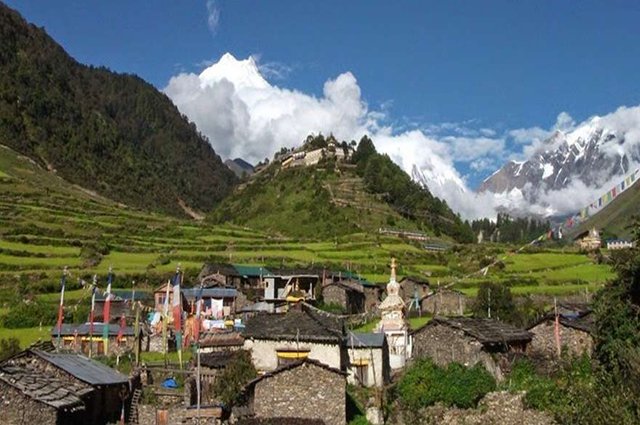Tsum Valley Trek Guide: Why Going Alone Might Cost You More Than You Think

Trekking to Tsum Valley without a guide can sound adventurous, but it often brings unexpected challenges. Discover why hiring a guide is a smart move for your safety, comfort, and cultural understanding.
Tsum Valley, is located away in the northern part of Nepal near the Tibetan border, is one of the least explored trekking routes. It is known for its peaceful vibe, deep-rooted Buddhist culture, and isolated villages that feel like they belong to another time. Unlike the more commercial trails like Annapurna or Everest, Tsum Valley keeps its secrets well hidden until someone local helps you unlock them.
I have walked this trail many times, and I’ll say this honestly: Tsum Valley is not for first-time solo trekkers. You might be tempted to go without a guide to save money or to feel more independent. But here’s the truth without a guide, the trek can quickly go from exciting to exhausting.
1. Navigation Isn’t Easy
The Tsum Valley route isn’t as clearly marked as you might expect. GPS might help in open areas, but once you get into dense forests or cross landslides, signals disappear. Signboards? Rare. Trail splits? Many. It’s easy to take a wrong turn and find yourself hours off-route, wasting precious time and energy.
A guide knows the trail by heart. They remember small landmarks, seasonal route changes, and even which rocks are slippery after rain. They’ve likely seen people go missing or lost before and they are there to make sure that’s not your story.
2. Permits and Checkpoints Can Get Confusing
To enter the Tsum Valley, you need two permits: the Manaslu Restricted Area Permit (RAP) and the Tsum Valley Permit. You also need to be in a group of two or more with a licensed guide to even get these permits. Trekking alone without one is technically not allowed, though some try to bend the rules.
Guides handle all the paperwork, making sure you don’t get stuck in Kathmandu or turned back at a checkpoint. They save you from the stress of standing in line, misfiling documents, or explaining your plan to officers who may not speak English well.
3. Language Barrier Is Real
Most people in Tsum Valley speak Tibetan dialects or Nepali. English? Very limited. Locals are warm and welcoming, but if you can't communicate, you'll miss out on some of the most rewarding parts of the trek real conversations, shared tea breaks, and cultural insights.
A good guide doesn’t just translate. They build a bridge between you and the people. They will explain the meaning behind the Mani walls, why certain monasteries are off-limits at certain times, and even help you take part in local customs without unintentionally being disrespectful.
4. Food and Accommodation Aren’t Always What You Expect
Forget the idea of consistent teahouses with set menus. In many villages, meals are basic mostly dal bhat or noodle soup. Beds might be wooden planks with thin mattresses. Without a guide, you might find yourself knocking on locked doors or being told the place is full when it’s not.
Guides usually call ahead or have relationships with locals. They ensure you have a place to sleep and get a warm meal at the end of a long day. They also help check food quality, water safety, and make sure you're not eating something that could upset your stomach halfway through the trail.
5. Emergencies Can Happen—And You’ll Want Help Fast
Altitude sickness, twisted ankles, food poisoning, or even heavy snowfall can change everything in a few hours. There are no hospitals in Tsum Valley and very few villages have phone access. Evacuations are difficult and expensive.
A trained guide can spot symptoms early and take action—whether that’s changing the route, getting you to a lower altitude, or arranging help from nearby villagers. They carry first aid kits, know basic medical steps, and most importantly, stay calm when things go wrong.
6. You Get Way More Than Just Safety
Guides don’t just show the way. They add meaning to your walk. They’ll point out the house of a lama who’s meditated for decades, tell you the backstory of ancient monasteries, or share tales of how villagers survive harsh winters with no roads in or out. You start seeing the trek as more than just a physical journey. It becomes a deeper connection with the mountains and their people.
Final Thoughts
Tsum Valley is powerful in its quietness and raw beauty. But that same remoteness makes it tricky, especially without local help. Hiring a guide doesn’t make you any less of a trekker it makes your trip richer, smoother, and safer.
So when you're planning your Tsum Valley adventure, think beyond just maps and miles. Think about what it means to understand, connect, and grow through travel. And in places like this, a guide is not just useful they are essential.